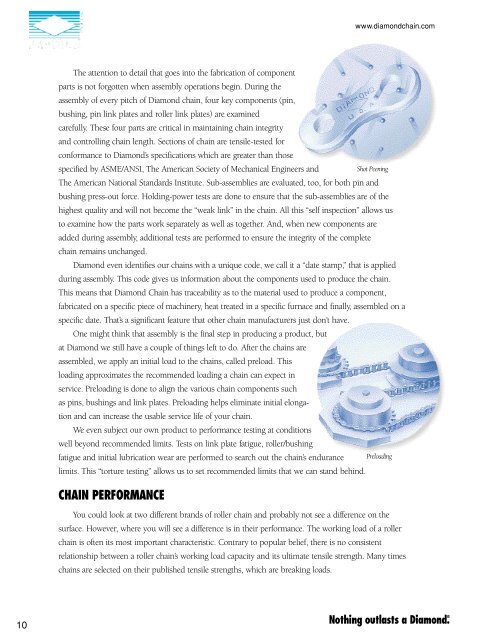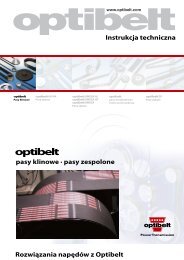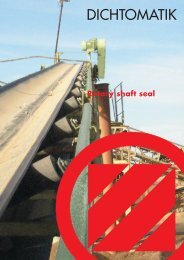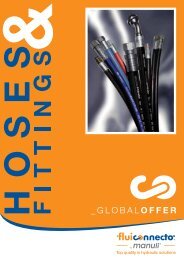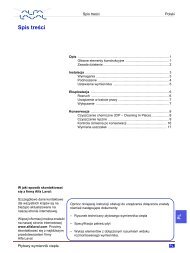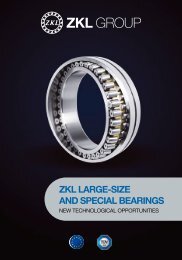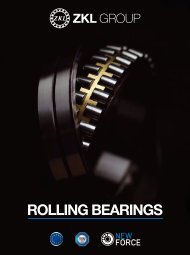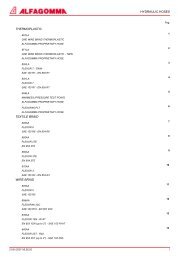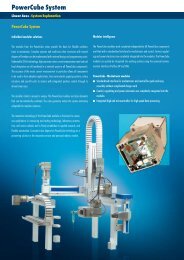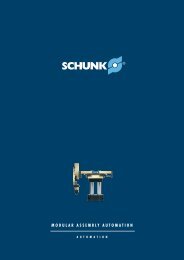Over 110 years of Quality P e rf o rmance and Serv i c e
special application chain - Spinet
special application chain - Spinet
- No tags were found...
You also want an ePaper? Increase the reach of your titles
YUMPU automatically turns print PDFs into web optimized ePapers that Google loves.
www.diamondchain.com<br />
The attention to detail that goes into the fabrication <strong>of</strong> component<br />
p a rts is not forgotten when assembly operations begin. During the<br />
assembly <strong>of</strong> every pitch <strong>of</strong> Diamond chain, four key components (pin,<br />
bushing, pin link plates <strong>and</strong> roller link plates) are examined<br />
c a re f u l l y. These four parts are critical in maintaining chain integrity<br />
<strong>and</strong> controlling chain length. Sections <strong>of</strong> chain are tensile-tested for<br />
c o n f o <strong>rmance</strong> to Diamond’s specifications which are greater than those<br />
specified by ASME/ANSI, The American Society <strong>of</strong> Mechanical Engineers <strong>and</strong><br />
Shot Peening<br />
The American National St<strong>and</strong>ards Institute. Sub-assemblies are evaluated, too, for both pin <strong>and</strong><br />
bushing press-out force. Holding-power tests are done to ensure that the sub-assemblies are <strong>of</strong> the<br />
highest quality <strong>and</strong> will not become the “weak link” in the chain. All this “self inspection” allows us<br />
to examine how the parts work separately as well as together. And, when new components are<br />
added during assembly, additional tests are pe<strong>rf</strong> o rmed to ensure the integrity <strong>of</strong> the complete<br />
chain remains unchanged.<br />
Diamond even identifies our chains with a unique code, we call it a “date stamp,” that is applied<br />
during assembly. This code gives us information about the components used to produce the chain.<br />
This means that Diamond Chain has traceability as to the material used to produce a component,<br />
fabricated on a specific piece <strong>of</strong> machinery, heat treated in a specific furnace <strong>and</strong> finally, assembled on a<br />
specific date. That’s a significant feature that other chain manufacturers just don’t have.<br />
One might think that assembly is the final step in producing a product, but<br />
at Diamond we still have a couple <strong>of</strong> things left to do. After the chains are<br />
assembled, we apply an initial load to the chains, called preload. This<br />
loading approximates the recommended loading a chain can expect in<br />
s e rvice. Preloading is done to align the various chain components such<br />
as pins, bushings <strong>and</strong> link plates. Preloading helps eliminate initial elongation<br />
<strong>and</strong> can increase the usable service life <strong>of</strong> your chain.<br />
We even subject our own product to pe<strong>rf</strong> o <strong>rmance</strong> testing at conditions<br />
well beyond recommended limits. Tests on link plate fatigue, ro l l e r / b u s h i n g<br />
fatigue <strong>and</strong> initial lubrication wear are pe<strong>rf</strong> o rmed to search out the chain’s endurance P re l o a d i n g<br />
limits. This “tort u re testing” allows us to set recommended limits that we can st<strong>and</strong> behind.<br />
CHAIN PERFORMANCE<br />
You could look at two diff e rent br<strong>and</strong>s <strong>of</strong> roller chain <strong>and</strong> probably not see a diff e rence on the<br />
s u <strong>rf</strong>ace. However, where you will see a diff e rence is in their pe<strong>rf</strong> o <strong>rmance</strong>. The working load <strong>of</strong> a ro l l e r<br />
chain is <strong>of</strong>ten its most important characteristic. Contrary to popular belief, there is no consistent<br />
relationship between a roller chain’s working load capacity <strong>and</strong> its ultimate tensile strength. Many times<br />
chains are selected on their published tensile strengths, which are breaking loads.<br />
10<br />
Nothing outlasts a Diamond. ®


